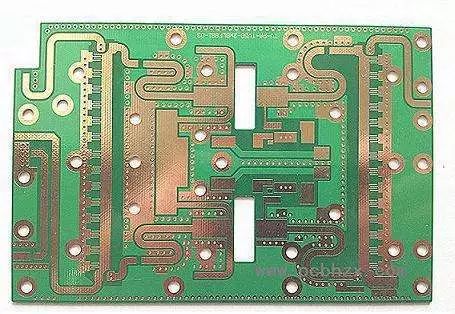
Date:2018-05-29 Categories:Industry News Hits:518
Master the welding temperature and time. During welding, there should be enough heat and temperature. If the temperature is too low, the solder fluidity is poor, it is easy to solidify and form false soldering; if the temperature is too high, the solder will flow, the solder joint is not easy to store tin, the flux decomposition speed is accelerated, the metal surface oxidation is accelerated, and the solder pad on the printed circuit board falls off. Especially when natural rosin is used as flux, the soldering temperature is too high, and it is easy to produce carbonization due to oxidation peeling, resulting in false soldering.

1、 Welding process of printed circuit board
1. Preparation before welding
First of all, it is necessary to be familiar with the assembly drawing of the printed circuit board to be welded, and make ingredients according to the drawing, check whether the model, specification and quantity of components meet the requirements of the drawing, and make preparations for the lead forming of components before assembly.
2. Welding sequence
The assembly and welding sequence of components is as follows: resistor, capacitor, diode, triode, integrated circuit, high power transistor, and other components are small first and then large.
3. Welding requirements for components
(1) Resistor welding
Install the resistor accurately in the specified position according to the drawing. The mark should be upward and the word direction should be consistent. After installing the same specification, another specification should be installed to make the height of resistor consistent as far as possible. After soldering, the excess pins exposed on the surface of printed circuit board shall be cut off.
(2) Capacitor welding
Install the capacitor in the specified position according to the drawing, and pay attention to the polarity capacitor. The "+" and "-" poles should not be connected wrongly, and the marking direction on the capacitor should be easy to see. First install glass glaze capacitor, organic dielectric capacitor, porcelain dielectric capacitor, and finally install electrolytic capacitor.
(3) Welding of diode
Diode welding should pay attention to the following points: first, pay attention to the polarity of the anode and cathode, not to install wrong; second, the model mark should be easy to see; third, when welding vertical diode, the shortest lead welding time should not exceed 2S.
(4) Triode welding
Pay attention to the correct insertion of E, B and C leads; the welding time should be as short as possible. Clamp the lead pins with tweezers during welding to facilitate heat dissipation. When welding high-power triode, if it is necessary to add heat sink, the contact surface should be flat and polished before fastening. If insulating film is required, do not forget to add film. When pin and circuit board need to be connected, plastic wire should be used.
(5) Integrated circuit soldering
First, according to the drawing requirements, check whether the model and pin position meet the requirements. When welding, first weld the two pins along the edge to position them, and then weld them one by one from left to right from top to bottom.
For capacitors, diodes, triodes exposed on the surface of the printed circuit board, the excess pins should be cut off.
2、 Method of dismantling welding
In the process of debugging and maintenance, or when replacing components due to welding errors, it is necessary to remove welding. Improper disassembly and soldering methods often lead to the damage of components, the fracture of printed wire or the drop of pad. Good disassembly welding technology can ensure the smooth commissioning and maintenance work, and avoid increasing the failure rate of products due to the failure of replacement devices.
Disassembly and welding of common components:
1) Choose suitable medical hollow needle for welding
2) Remove welding with copper braided wire
3) Remove welding with air bag solder receiver
4) Remove welding with special soldering iron
5) Remove soldering with tin absorbing electric soldering iron